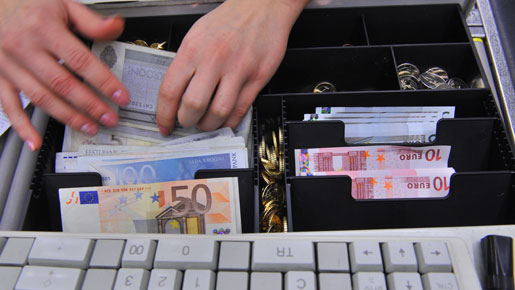
Estonia has won the green light to join the eurozone in 2011 and become its 17th member in what is likely to be the crisis-hit currency area’s last enlargement for at least four years.
Despite ECB doubts about how long Estonia can hold down inflation, the EU’s executive arm said the former Soviet republic of 1.4 million people was ready for the euro, unlike other, bigger hopefuls such as the Czech Republic, Hungary and Poland.
“Estonia has achieved a high degree of sustainable economic convergence and is ready to adopt the euro on January 1, 2011,” Olli Rehn, EU Economic and Monetary Affairs Commissioner Olli Rehn said in a statement.
If, as expected, it is given the final go-ahead by EU finance ministers, the Baltic country will become the fifth of the states that joined the EU in 2004 to adopt the currency. Slovenia entered the eurozone in 2007, Cyprus and Malta in 2008 and Slovakia in 2009.
The commission’s decision could reassure other candidates that the eurozone remains open for expansion despite Greece’s debt crisis which has fuelled tensions in the currency area and forced it to create a $1trn emergency aid mechanism for members facing solvency problems.
But eurozone turmoil has dampened enthusiasm towards the euro among candidates. Polish Finance Minister Jacek Rostowski has said Warsaw was in no rush to join the currency area, which needs time to “refurbish” after the Greek crisis.
In a separate report, the ECB said there were mixed signals on Estonia’s readiness to adopt the euro because of questions over the country’s convergence sustainability in the future, notably about inflation.
Very low inflation in Estonia – which averaged -0.7 percent over the last 12 months, compared to the one percent benchmark – was due to mainly temporary factors, it said.
“In sum, there are concerns regarding the sustainability of inflation convergence in Estonia,” the ECB said.
Under EU law, the commission’s recommendation is binding. The ECB’s ar not.
The commission said that other euro candidates – Bulgaria, the Czech Republic, Estonia, Latvia, Lithuania, Hungary, Poland Romania and Sweden – were not ready.
Their inflation rates are too high, budget deficits too wide or most have not yet joined the ERM II currency system, a stability test for eurozone membership, it said.
“The nine member states with a so-called ‘derogation’ [to the euro] have made uneven progress on the road to the single currency,” the commission said.
A recent poll among economists, mirrored by a report by credit rating agency Fitch, said those countries were forecast to adopt the euro in 2014-2016 at the earliest.
The commission’s recommendation crowns reforms that have turned Estonia into one of the most open and liberal economies in the 27-nation EU and a darling of investors.
It rewards Estonia’s austerity programme, which was implemented despite deep recession last year and has ensured the country’s budget deficit is below three percent of GDP – one criterion for joining the eurozone.
The country cut its deficit to 1.7 percent of GDP last year despite an economic contraction of nearly 15 percent. Estonia also has one of the smaller national debts in the EU – 7.2 percent of GDP.
The adoption of the euro is not expected to change much for Estonia’s investors and its citizens since the country has long kept its kroon currency fixed against the euro in a currency board. The exchange rate is expected to be kept during the currency changeover.
The commission said Estonia, which accounts for a tiny fraction of the eurozone’s 10trn euro ($12,700bn) economy, met all the entry criteria on inflation, interest rates, its budget deficit, public debt and currency stability.

